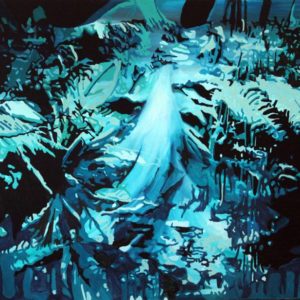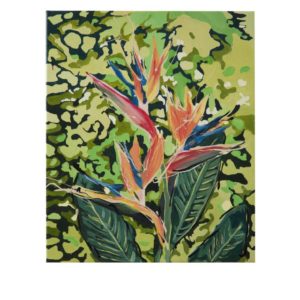The Others
 Meet The Others: Leigh Webster
Meet The Others: Leigh Webster
The Game Changers. The Rule Breakers. The Innovators. Discover some of the fantastic emerging talent showcasing their work at The Other Art Fair.
One of the driving forces behind Leigh Webster’s artistic practice is his utilization of art to translate an abstract idea into an aesthetic physical form. Webster’s landscape paintings are a culmination of distinct colours and shapes which depict the physical world around him. At the most recent Melbourne edition of The Other Art Fair, Leigh Webster answered some of our questions we had about his work and practice.
How would you describe your artwork?
Being able to visualise my artistic ideas and to progress in my technical capabilities has always been a major factor when creating my artwork. I am continually exploring how to have a deeper understanding as to how the formal elements and principles of art can be utilised when translating an abstract idea into an aesthetically pleasing tangible form, thus creating a private ‘visual language’ for the audience, which is reminiscent of Ludwig Wittgenstein’s philosophical investigations into a private language. My intention is to display the complexities within an image through the use of varied shape, edges and line in order to play with the notion of tonal values and altered perception.
What does making art mean to you?
Edgar Degas eloquently stated that ‘art is not what you see, but what you make others see’. This resonates with me as art is not simply my own form of therapy and reflection but it is omnipresent. There are so many varying purposes of art, yet what helps define art is how it can be utilised for visual communication to express emotions, feelings and/or ideas as well as allowing others to be inspired.
How did you get started making art?
From as young as I can remember, I have always been interested in the arts. Early primary school memories in which the teacher would say to the class that it is nap-time or for everyone to go and play outside yet I would ask whether it was okay for me to be inside, drawing instead. I have always been interested in creating and exploring my technical capabilities and depicting the world as I see it. It wasn’t until secondary school in which I made a conscious decision to focus on my art practice. My teachers allowed me to bring in my art materials to various classes, as they knew they couldn’t fight with my visual and creative needs.
What is it like to be a part of The Other Art Fair?
Being a part of The Other Art Fair was an amazing experience in which I had the opportunity to have a clearer understanding of what the current trends and stylings are within the contemporary art scene. I used this opportunity to reflect with other artists and professionals to have a clearer understanding of how my work is perceived and to gain insight into other art practices so that I can further develop my artistic capabilities.
What is your favourite piece for sale on your Saatchi Art profile and why?
I do not necessarily have a favourite artwork as each image represents a separate period of time in which I have been developing my visual language. My work takes me a considerable amount of time to complete as I attempt to decode the ‘visual perception’ of what I see. It is a conscious decision as to knowing how I intend to break down the subject matter and to what length. Therefore, all of my work is my personal response to the process of mark making and so I see my portfolio as a collective instead of viewing my practice as having individual pieces.











